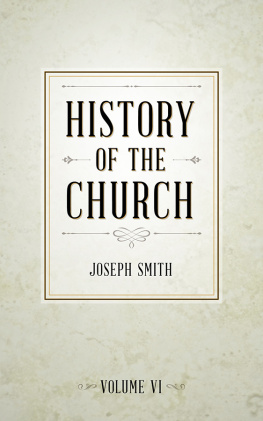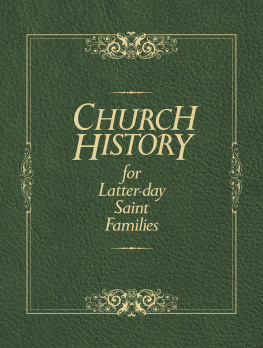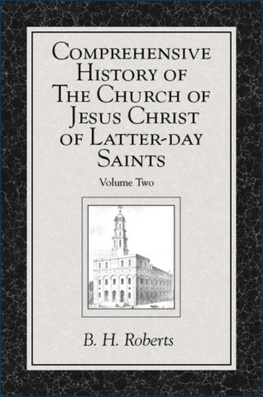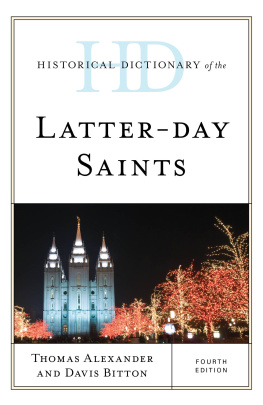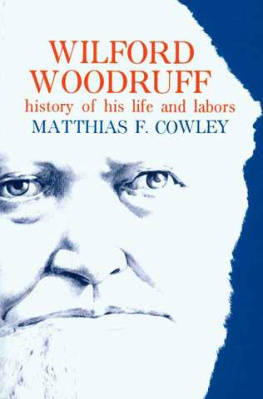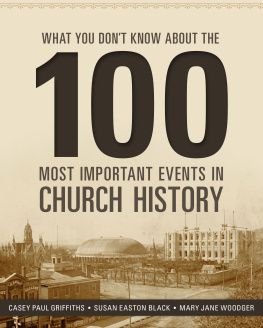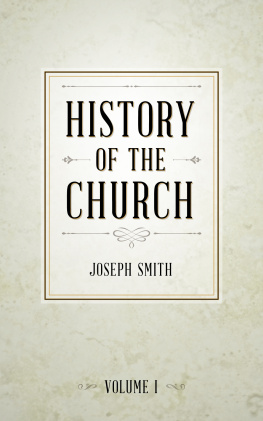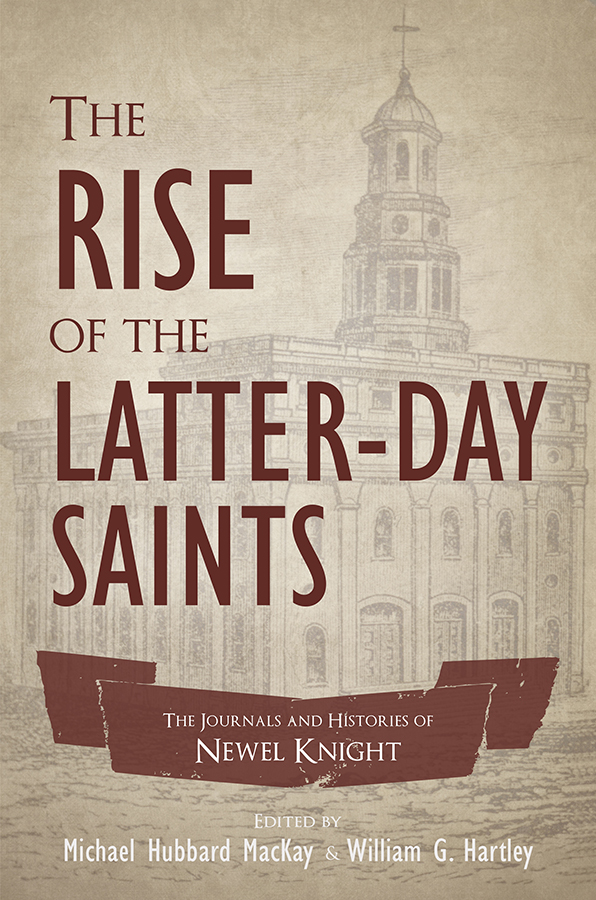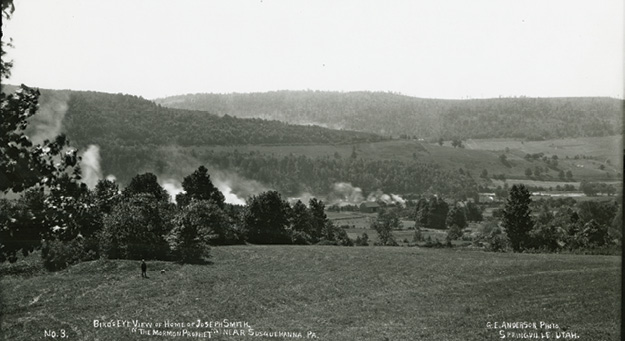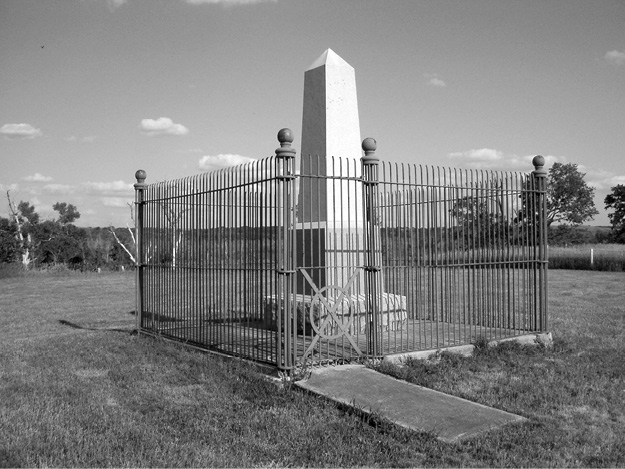INTRODUCTION
The journals of Newel Knight are one of a handful of essential manuscript sources that every historian of The Church of Jesus Christ of Latter-day Saints relies upon to understand its early history. The Joseph Smith Papers Project has recently transcribed and made available many official histories or assigned histories from the early Church in print and on the Web. They have also included other important documents, like the early history of Parley P. Pratt and Lucy Mack Smith. Left out of this massive project is a transcription of Newel Knights journals. He was one of the very earliest Latter-day Saint converts and maintained a lifelong friendship and close association with Joseph Smith. He was one of a few early members of the Church to write about the earliest events in Latter-day Saint history with direct experience with some of the most foundational events. Knight died in January 1847, north of Winter Quarters, at the young age of forty-six. During the last five years of his life, he wrote a personal history composed of two elements, an autobiography and a journal, which form this valuable historical record. Though extremely important, it has always been a difficult source because it is only found in its full rendition in several different manuscripts. It is frequently cited but not always understood. This publication of his history pieces together his manuscripts and offers a way to cite and use his history more precisely.
Knight first penned a lengthy autobiography that told his life story up through the early 1840s. As he wrote, he was aware of and interacted with the official Church histories being written and compiled at the same time. Knowing that Joseph Smiths history up to 1834 was being published serially in Nauvoos Times and Seasons , Knight decided to copy from and link his experiences to it. Therefore, Knights recollections up to the year 1834 borrow extensively from Joseph Smiths published history, while including his own insights. Knights autobiography also narrates his personal, family, and community experiences that did not involve Joseph Smith, making it a rich source of early Church history.
His writing was done in phases. Around 1844, having caught up with the Churchs history and his own life story, he began a second phase of writing. He started a journal, a diary-type record with dated entries, that contains his own observations and scrawls about what was happening in in the Church after Joseph Smiths death. This material records invaluable 184647 details about the exodus from Nauvoo and Knights leadership role in the large advance company that created Camp Ponca far northwest of Winter Quarters.
Found in both the autobiography and journal sections are rich source materials for understanding the Churchs foundational years and the lives and circumstances of the early believers. The heart of Knights voluminous writings, which he designed for his posterity, concerns his association with Joseph Smith, his deeply felt commitment to the Church, and his personal religious experiences. Knight wrote:
To know that I have seen and witnessed these important events with my natural eyes, and also to know of a surety that the heavens have been opened to my view, that I have beheld the majesty on high and heard the voic[e] of my Redeemer which has spoken words of comfort and instruction to me, fills my whole being with gratitude to my heavenly father while I write these things which are verrily true. And I write them that my posterity and future generations may know of them and that I may leave a faithful testimony of the things which I do know to be verrily true.
For the foundational years of the Church, first-person records are not numerous, and extensive accounts like Knights are rare. His writings therefore merit publication, circulation, consultation, and study.
Newels widow, Lydia Goldthwaite Bailey Knight, preserved his records and brought them west with her to Utah in 1850. The autobiography and journal holographs are now a valuable collection in The Church of Jesus Christ of Latter-day Saintss Church History Library in Salt Lake City. They are catalogued as MS 767, Newel Knight Autobiography and Journal.
Newel Knight, a Brief Biography
Newel Knight (18001847) was a close and loyal friend of Joseph Smith Jr. from 1826, When Newel was about eight years old, his family moved to the Colesville, New York, area. He married Sally Colburn on June 7, 1825. When Joseph Smith became one of Joseph Knights hired hands late in 1826, he told some of the Knights about his encounters with the divine. The Knights provided him with material assistance during his Book of Mormon translation workpaper, food, money, and moreand helped him court Emma Hale.
Birds Eye View of Home of Joseph Smith, The Mormon Prophet, Near Susquehanna, PA., 1907. George Edward Anderson Collection, L. Tom Perry Special Collections, Brigham Young University.
Joseph Smith organized the Church in April 1830. In May 1830, Newel Knight was the first of the extended Knight family network to be baptized. Before this, Joseph Smith cast out an evil spirit from Knight. That moment has often been lauded as the first miracle performed in Latter-day Saint history, thanks to Joseph Smiths resounding interest in the event, which he described in detail in his history.
After local residents drove the Saints out of Jackson County in the fall and winter of 1833, Newel and his wife Sally found temporary quarters in Clay County. As he attested in his history, he and Lydia participated in the Kirtland Temple dedication events.
One day in Nauvoo, Joseph Smith, in his private journal, paid tribute to Knight for being one of his loyal friends from the beginnings of the Restoration. Not long after that, Knight, heartbroken when mobs stormed Carthage Jail and killed Joseph and Hyrum Smith, his longtime friends, accepted the Twelve Apostles as the successors. Newel, Lydia, and their family left Nauvoo during the 1846 spring wave of refugees. Later that year, assigned as Brigham Youngs representative and head of a high council, Knight gave spiritual leadership to those at George Millers Ponca Encampment above Winter Quarters, in what today is northern Nebraska. Knight died there on January 11, 1847, a mile west of todays town of Niobrara.
Lydia Knights headstone at Saint George City Cemetery.
His widow, Lydia, and their children went west to Utah in 1850, taking Newels journals and diaries with them. Among Newel and Lydias nine children was Jesse Knight, born in Nauvoo, who became one of Utahs earliest wealthy businessmen. In 1908 Jesse Knight directed the erection of an obelisk monument at the Ponca site that honors Newel Knight and others who died there.
Newel Knights obelisk monument at Niobrara, Nebraska, erected by his son Jesse Knight.
Presenting Knights Writing in Five Parts
In this volume, we present Newel Knights journals in five parts in mostly chronological periods. Each part begins with a brief biographical summary about Knight and the corresponding period of Latter-day Saint history.
Part 1 covers the period from Knights birth in 1800 up to June of 1834. This period is a cohesive unit due to Knights heavy borrowing from the Times and Seasons installments of Joseph Smiths History of the Church; that history extended only to 1834, from which point Newel continued writing independently.


